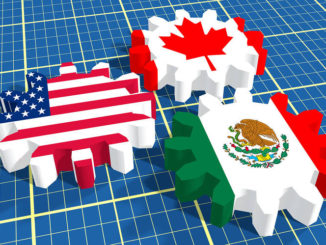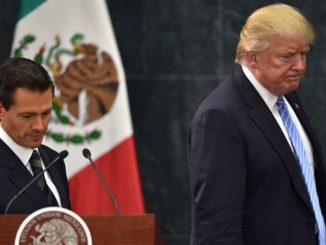
By Robert Asahina,
The goal of U.S. energy independence may be achieved through North American energy interdependence. That was a forceful argument advanced during the final panel of the Conference on Energy Regulation at the Bush Center on September 12.
“This is the start of a discussion to create a North American energy policy that can change the future of the world,” Governor Rick Perry of Texas said, “and Mexico is going to be at the epicenter of that.” The key to this hemispheric transformation is the proposal by the Mexican government to open the state-owned oil company, Pemex, to foreign investment.
The Mexican oil industry has been nationalized since 1938, and President Enrique Peña Nieto’s historic proposals for sweeping reform have already run into opposition. But the case for growing Mexico’s economy by developing its energy resources is overwhelming. As the former Energy Secretary of Mexico and former CEO of Pemex, Jordy Herrera, put it,
We have just explored less than 20% of our own resources at sea, in the Gulf of Mexico, and we’re just learning how to deal with unconventional resources… It’s not that Mexico has run out of oil. We’ve run out of public money, and you cannot increase taxes to poor people — 50 million of Mexicans are poor people — to get a rich public company to produce oil.
Perry emphasized how the impact of growth in Mexico would extend far beyond its border: “I cannot tell you how important it is for Mexico to be able to have the ability to help the people in their country,” he said. “When this happens, the immigration policy that they’re discussing today [in Washington, D.C.] goes away.”
He also noted that the northern neighbor of the U.S. is an equally important player in this three-way partnership. “The security of North America is inextricably intertwined between our great friends in Canada and our friends in Mexico,” he noted. The most pressing issue between the two northern neighbors is completing the Keystone XL pipeline, intended to carry oil from Canada to the Gulf Coast, which remains in regulatory limbo.
The Canadian Minister of Finance, James Flaherty, pointed out that more oil comes to the U.S. every day from Canada — 2.7 million barrels — than from Venezuela and Saudi Arabia combined. So “It just challenges my imagination to understand why [Keystone] wouldn’t be approved in the best interest of American workers… This is like a joint enterprise, really, with the United States, and I am disappointed with [the lack of approval for] Keystone so far.”
Flaherty was particularly puzzled and frustrated by the overlapping reviews and regulations at the federal, state, and local level in the U.S., which delay projects like Keystone indefinitely. “What we did federally [in Canada] a couple of years ago,” he said, “is reduce our environmental assessments to one assessment per project … with a time limit, and that way we can get on with these projects.”
At stake is not just Canadian growth, but U.S. prosperity: “More than half of the oil sands” in Canada, Flaherty noted, “are owned by interests in the United States.” He continued: “I think the three of us who are partners in NAFTA [the U.S., Canada, and Mexico] need to participate together in making sure that we have the [energy] network together… We’ve got to be realistic about growth and providing adequate energy for people.”
“I’m all for environmental assessments,” Flaherty concluded, sounding a note common to many conference participants, “but I think we have to be pragmatic and make sure that there’s economic progress and job creation.” Both of these are spurred by developing the energy sector, and both contribute to the joint security of the U.S., Canada, and Mexico. More energy from Canada and Mexico means less from countries that don’t share the interests of the U.S. In this way, North American interdependence bolsters U.S. independence.
Follow us on facebook and twiitwer



